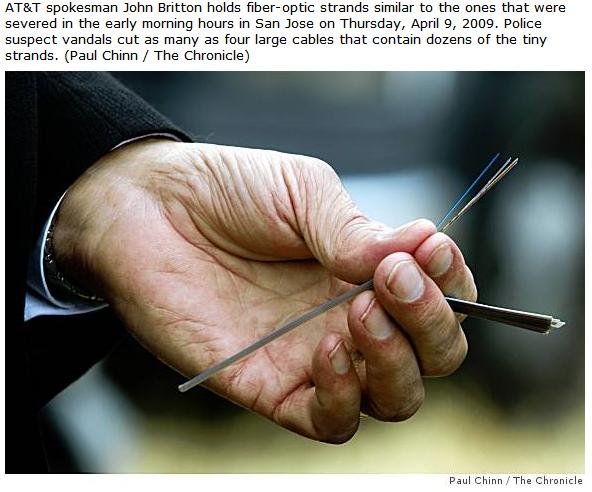
People who talk to each other across a city or a nation - or do business locally or around the world, or seek electronic home entertainment from anywhere - depend on slender bundles of glass fibers, thinner than a human hair, that carry signals or images at nearly the speed of light.
"It really is a miraculous technology, and the Internet couldn't exist in its present form without it," said Joseph Kahn, a Stanford professor of electrical engineering and one of the nation's leading specialists in optical fiber transmission.
The miracle began nearly 60 years ago when a Punjabi university student who now lives in Palo Alto challenged his Indian professor's dogma and set off on his own voyage of discovery that led him to pioneer the science and technology of fiber optics.
Today's fiber-optic cables are bundles of dozens of single hair-thin strands, each fiber made of highly purified glass - often pure silica - and coated in a cladding of impure glass that holds light beams inside. A single cable, about 4 inches thick, has the capability to hold dozens of fibers, which can carry pulses of light signals as far as 200 miles - either curving or in a straight line - at about two-thirds the speed of light. Inside each fiber, the light's "message" is reflected again and again at an angle against the fiber's wall as it travels along, Kahn said.
For long-distance communication, relay stations, known as optical amplifiers, are located every 50 to 60 miles to boost the light signals until they reach the end of their voyage - a phone company, a high-speed Internet connection, or a doctor's instrument probing a patient's throat.
The Punjabi student, Narinder Singh Kapany, is known as the father of fiber optics.
On Friday, Kapany, now 80, explained how it all began.
"I was just a precocious kid taking a college physics course when one day the professor told us that light 'always travels in a straight line,' " he recalled. "But that can't be true, I thought - it must be bent sometimes."
So he continued thinking about light as he went on with his physics studies, he said.
"And when I won a Royal Society fellowship for advanced study in optics at the Imperial College of Science and Technology in London," Kapany said, "I really understood the principle we now call the total reflection of light - the principle of fiber optics that let me to experiment with light beams inside bent glass tubes."
Initially, he said, he thought only of medical applications, such as the kind of fiber-optic tubes that allow physicians peer into human organs.
"Only later did I realize that a fiber-optic cable could carry light for many miles - and so it can," he said.
Kapany founded a company called Optics Technology Inc. One of its directors was the late Luis Alvarez, the UC Berkeley Nobel Prize-winning physicist.
The company succeeded, as did others, and now he calls himself a "man of changed priorities." These include teaching at Stanford, UC Berkeley and UC Santa Cruz.
At UC Santa Cruz, Kapany has endowed a chair in optical electronics, and at UC Santa Barbara, a chair in Sikh Studies. He has also financed the collection of Sikh art at the Asian Art Museum in San Francisco, and leads international activities on behalf of the Sikh community - his own tradition.


